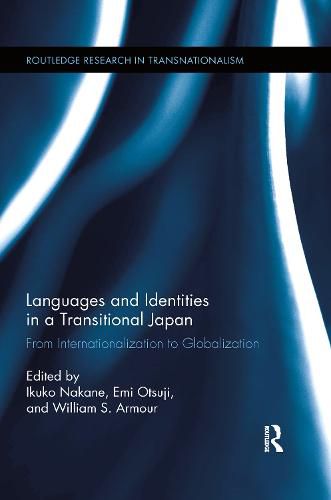Readings Newsletter
Become a Readings Member to make your shopping experience even easier.
Sign in or sign up for free!
You’re not far away from qualifying for FREE standard shipping within Australia
You’ve qualified for FREE standard shipping within Australia
The cart is loading…






This book explores the transition from the era of internationalization into the era of globalization of Japan by focusing on language and identity as its central themes. By taking an interdisciplinary approach covering education, cultural studies, linguistics and policy-making, the chapters in this book raise certain questions of what constitutes contemporary Japanese culture, Japanese identity and multilingualism and what they mean to local people, including those who do not reside in Japan but are engaged with Japan in some way within the global community. Topics include the role of technology in the spread of Japanese language and culture, hybrid language use in an urban context, the Japanese language as a lingua franca in China, and the identity construction of heritage Japanese language speakers in Australia. The authors do not limit themselves to examining only the Japanese language or the Japanese national/cultural identity, but also explore multilingual practices and multiple/fluid identities in a transitional Japan. Overall, the book responds to the basic need for better accounts of language and identity of Japan, particularly in the context of increased migration and mobility.
$9.00 standard shipping within Australia
FREE standard shipping within Australia for orders over $100.00
Express & International shipping calculated at checkout
This book explores the transition from the era of internationalization into the era of globalization of Japan by focusing on language and identity as its central themes. By taking an interdisciplinary approach covering education, cultural studies, linguistics and policy-making, the chapters in this book raise certain questions of what constitutes contemporary Japanese culture, Japanese identity and multilingualism and what they mean to local people, including those who do not reside in Japan but are engaged with Japan in some way within the global community. Topics include the role of technology in the spread of Japanese language and culture, hybrid language use in an urban context, the Japanese language as a lingua franca in China, and the identity construction of heritage Japanese language speakers in Australia. The authors do not limit themselves to examining only the Japanese language or the Japanese national/cultural identity, but also explore multilingual practices and multiple/fluid identities in a transitional Japan. Overall, the book responds to the basic need for better accounts of language and identity of Japan, particularly in the context of increased migration and mobility.